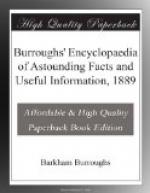POSITION OF THE HAND AND PEN
The right arm should rest on the muscles just below the elbow, and wrist should be elevated so as to move free from paper and desk. Turn the hand so that the wrist will be level, or so that the back of the hand will face the ceiling. The third and fourth fingers turned slightly underneath the hand will form its support, and the pen, these fingers and the muscles of the arm near the elbow form the only points of rest or contact on desk or paper. The pen should point over the shoulder, and should be so held that it may pass the root of the nail on the second finger, and about opposite the knuckle of the hand. An unnatural or cramped position of the hand, like such a position of the body, is opposed to good writing, and after many years of observation and study, all teachers concur in the one position above described, as being the most natural, easy and graceful for the writer, and as affording the most freedom and strength of movement.
Avoid getting the hand in an awkward or tiresome position, rolling it over to one side, or drawing the fore finger up into a crooked shape. Hold the pen firmly but lightly, not with a grip as if it were about to escape from service. Do not say, “I can’t” hold the pen correctly. Habits are strong, but will may be stronger, and if you hold the pen correctly in spite of old habits, for a few lessons, all will then be easy, and the pen will take its position at each writing exercise, with no effort whatever. Everything being in readiness, and the proper position assumed, the writer must now obtain complete control of hand and pen, by practice in movement.
[Illustration]
RAPIDITY.
One of the essentials of a practical business style of writing must be rapidity of execution, in order to be of any avail in the necessities and press of a business position. The demand of the merchant is, that his clerk shall not only write well, but with rapidity, and the volume of letters to be answered, bills to be made out, or items to be entered on the books of account, compel the clerk to move the pen with dexterity and rapidity, as well as skill. While there is great diversity among persons as to the rapidity as well as quality of their penmanship, some being naturally more alert and active than others, yet by securing the proper position of the hand, arm and body, favorable to ease and freedom of execution, then following this with careful practice in movement, until all the varied motions necessary in writing are thoroughly mastered, the person may, with suitable effort, acquire the quality of rapidity in writing, gradually increasing the speed until the desired rate is accomplished.




